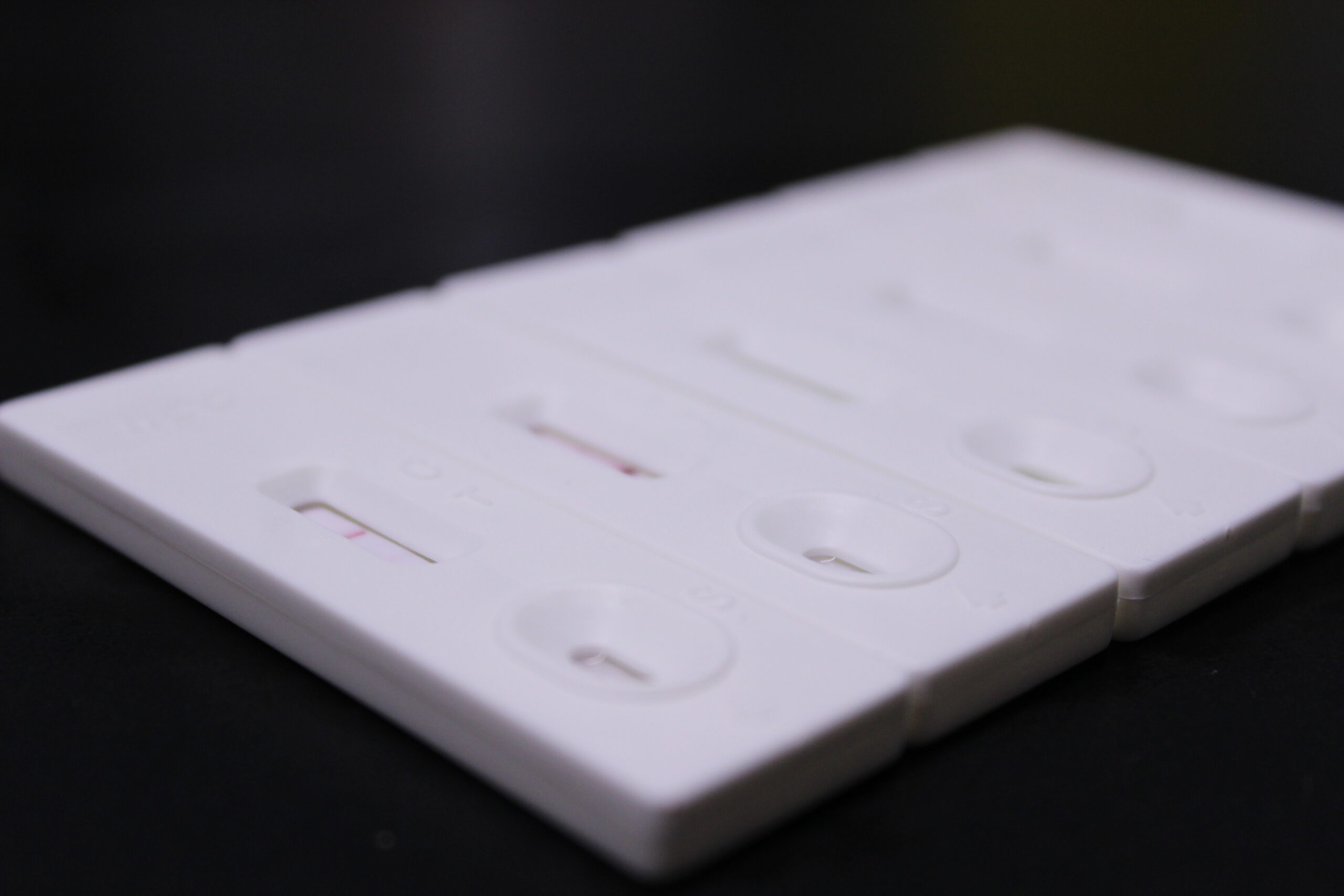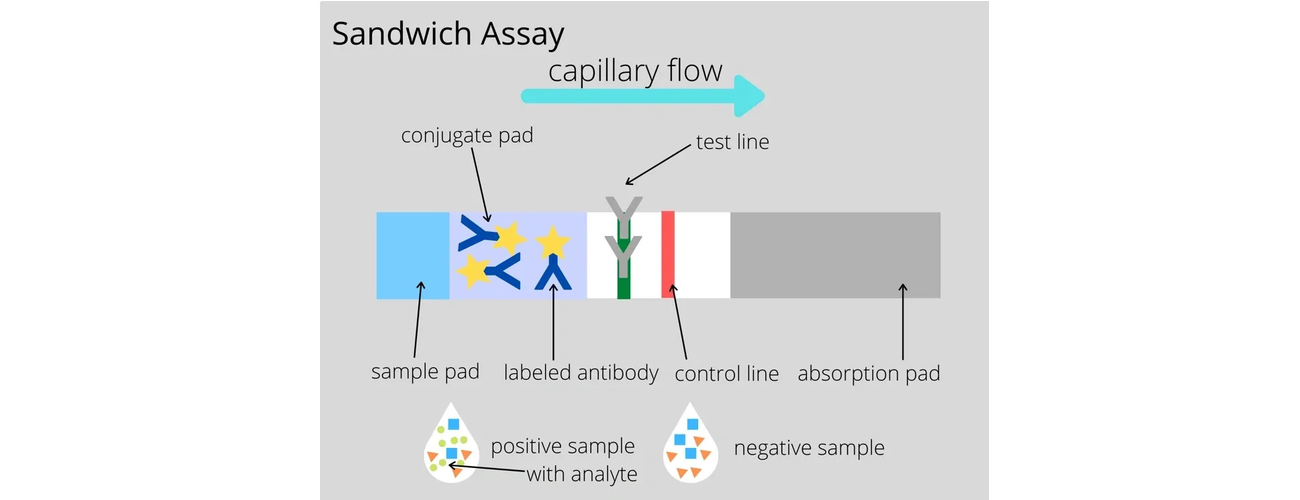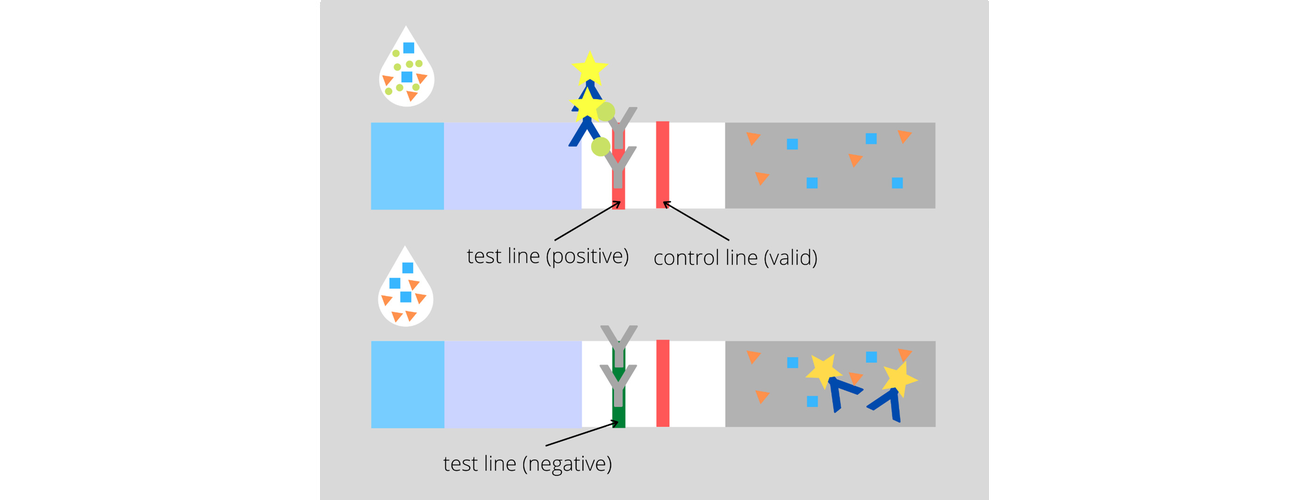Lateral Flow Immunoassay
Lateral flow immunoassay is an assay platform that is suited for point-of-care (POC) use. It can be used for the detection of target antigen or antibody in samples.
The test strip consists of several components: a sample pad, a conjugate pad with a labeled antibody, a test line, a control line, and an absorption pad. The capillary flow is from the sample pad to the absorption pad.
Color appearing in the control line is used to verify proper liquid flow through the strip. In all assays, a control line contains affinity ligands that detect another paired conjugate regardless of the presence of the target analyte.

Sandwich (Non-Competitive) vs. Competitive Assay
There are various methods that can be used to conduct a sandwich assay (e.g. double-antibody, double-antigen, etc.). The sandwich assay section of the image used a double-antibody sandwich method. The sample is first dropped onto the sample pad for analysis; the analyte can then bind onto the colloidal gold-labeled antibody. Following the capillary flow, the analyte-labeled antibody can bind on to the antibody-coated on the test line and show a red line in the test line region. If the analyte was absent in the sample, no red line would appear.
During competitive immunoassay, the test line is coated with analyte-conjugate. When the analyte is present in the sample, the labeled antibody in the conjugate pad would bind to the analyte first. The test line will not produce color if the analyte level exceeds the cut-off value since all the binding sites of the antibody are saturated during the capillary flow, thus the result is positive (no color). On the other hand, when the analyte is absent or less than the cutoff value, the labeled antibody would bind onto the test line, therefore, the result is negative (color on the test line). The desired cutoff value can be changed by the amount of coated antigen/antibody present on the test strip.

Sandwich Assay


Competitive Assay


